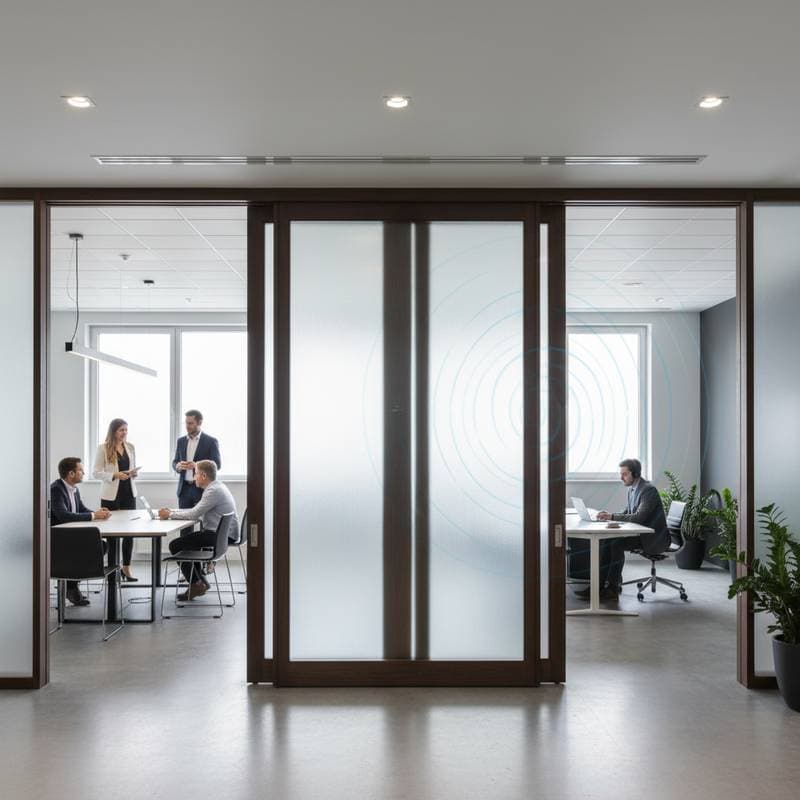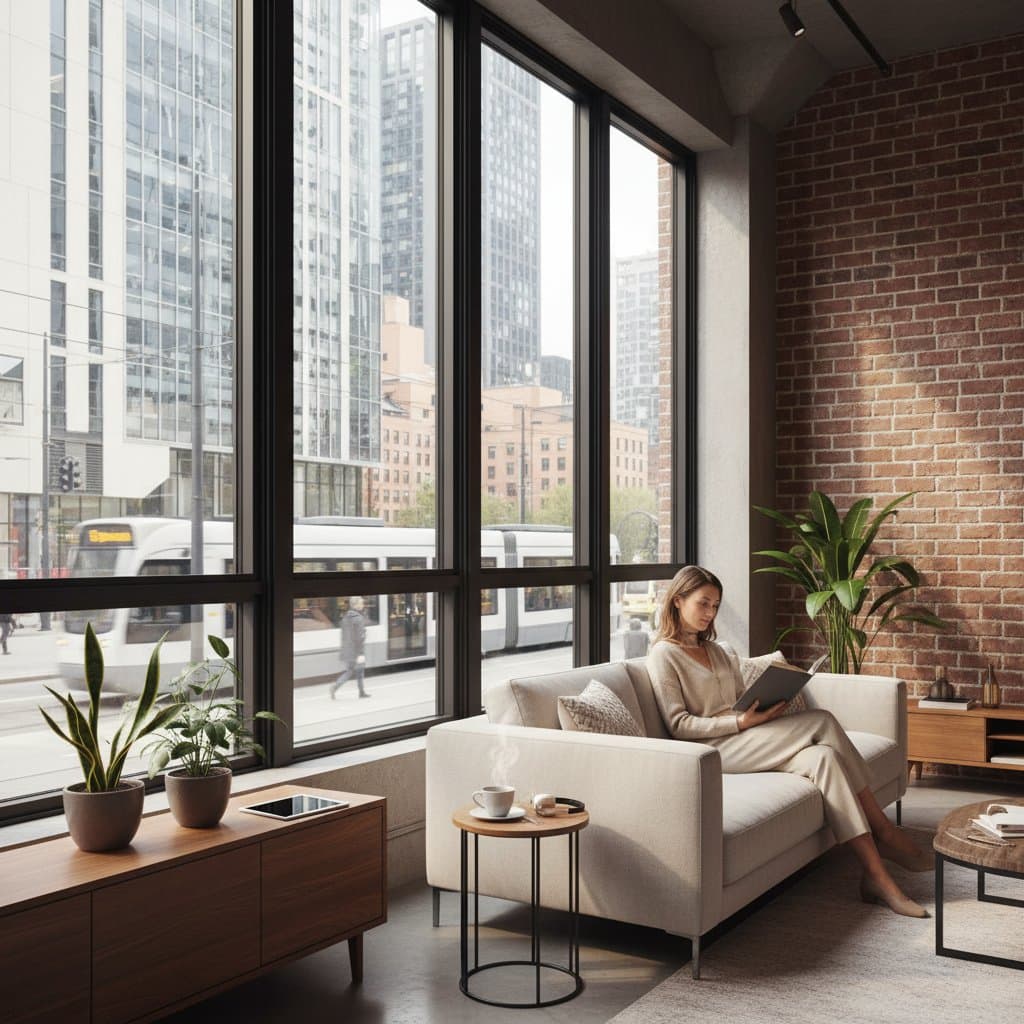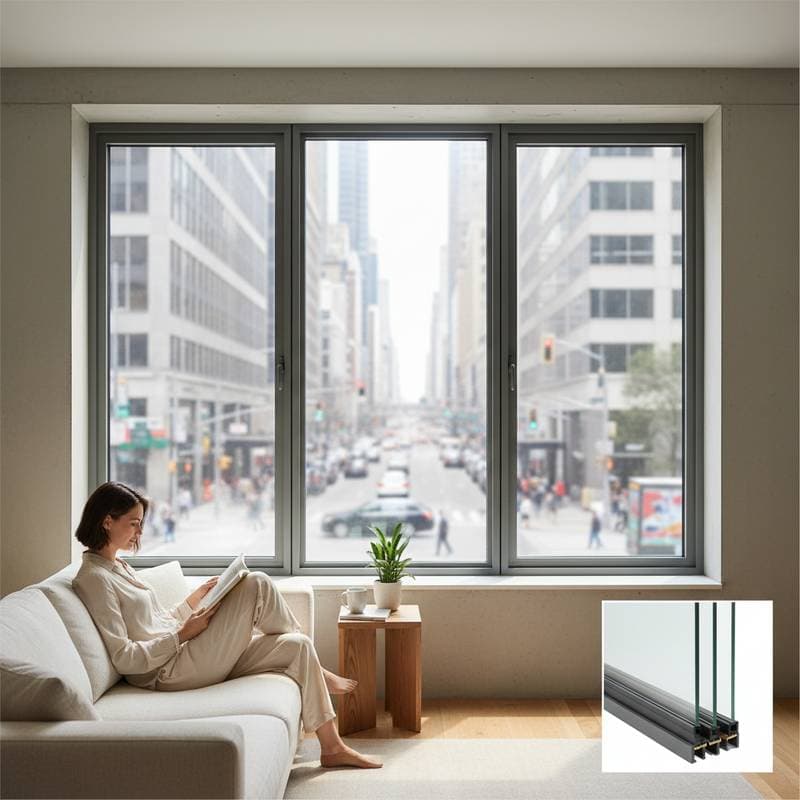Achieving 85% Noise Reduction with Acoustic Doors in Open Floor Plans
Open-concept designs create inviting, light-filled homes that foster interaction among family members. However, the absence of barriers allows sounds to travel freely, disrupting concentration in work areas or relaxation in private zones. Acoustic doors, with sliding options proving particularly effective, block up to 85 percent of sound transfer. This guide details their functionality, pricing, and selection process to help integrate them seamlessly into residential spaces.
Functionality of Acoustic Doors and Their Importance
Acoustic doors employ dense materials, perimeter seals, and robust builds to impede airborne noise. Unlike standard interior doors, which offer limited attenuation, these specialized units undergo rigorous testing for Sound Transmission Class (STC) ratings. Ratings above 40 indicate superior isolation; for context, typical hollow-core doors register 20 to 25 STC, whereas acoustic models exceed this threshold substantially, yielding the 85 percent noise reduction.
In expansive layouts, such doors enable zone division without visual obstruction. They prove essential for designating quiet areas like studies, entertainment rooms, infant spaces, or sleeping quarters adjacent to active zones.
Typical Installation Costs for Acoustic Doors
Expenses for installing an acoustic interior door depend on material choices, configurations, acoustic performance levels, and site-specific challenges. Homeowners generally allocate $900 to $2,800 per door, encompassing materials and expert labor. Premium sliding assemblies or bespoke wooden variants may escalate to $4,000 or beyond.
| Door Type | Average Installed Cost | STC Range | Common Applications |
|---|---|---|---|
| Hollow-core (basic) | $150–$400 | 20–25 | Routine room divisions |
| Solid-core wood | $600–$1,200 | 28–34 | Basic noise mitigation |
| Acoustic solid wood | $1,200–$2,800 | 35–42 | Professional spaces, sleeping areas |
| Sliding acoustic glass | $2,500–$4,000 | 38–45 | Flexible partitions |
| Acoustic composite | $900–$1,800 | 32–40 | Versatile modern settings |
These figures account for core components, workmanship, and basic fittings. Adjustments for intricate setups, like embedding into existing structures or laying floor guides for sliders, may inflate labor by 15 to 25 percent.
Factors Influencing Acoustic Door Expenses
Multiple elements determine final pricing, enabling informed budgeting.
Door Material and Internal Structure
Dense solid wood or composite interiors surpass hollow alternatives in damping vibrations. Layers of medium-density fiberboard (MDF), mineral wool, or safety glass amplify mass and absorption properties.
Dimensions and Setup
Expansive portals, including paired sliders or divider arrays, demand tailored production and reinforced mechanisms, elevating both supply and setup fees. Compact single units remain economical and straightforward to fit.
Sealing Mechanisms and Frame Quality
Optimal acoustics rely on airtight frames with perimeter gaskets, automatic thresholds, and latch systems that eliminate flanking paths. Incorporating these enhancements adds $150 to $300 per unit yet boosts STC by multiple increments.
Site Preparation Requirements
Swapping into pre-built walls involves dismantling moldings, repairing plaster, or adapting surrounds, while sliders necessitate level tracks, potentially adding $200 to $600 in specialist fees.
Benefits of Sliding Acoustic Doors in Adaptable Spaces
Sliding acoustic doors gain traction in contemporary residences for uniting auditory barriers with spatial adaptability. Users can segment areas for privacy or retract panels to encourage openness during social occasions. These differ from swing types by relying on interlocking edges, floor brushes, and weighted slabs for comparable isolation.
Key benefits encompass:
- Compact Footprint: Eliminates arc space, suiting constrained or multipurpose rooms.
- Aesthetic Harmony: Finishes in timber, frosted glass, or synthetics align with surrounding decor.
- Variable Separation: Position halfway for sightlines or fully shut for silence.
- Tailored Solutions: Configurations like dual rails, folding arrays, or hidden recesses accommodate diverse needs.
Though sliders might trail hinged doors in peak STC, premium installations deliver the targeted 85 percent attenuation through meticulous engineering.
Material Comparisons for Sound Control
Selections vary in isolation efficacy, longevity, and upkeep demands. The following summary aids decision-making.
| Material | STC Range | Installed Cost Range | Key Attributes |
|---|---|---|---|
| Solid Wood | 32–40 | $1,200–$2,800 | Natural texture, robust, suits classic styles |
| Laminated Acoustic Glass | 38–45 | $2,500–$4,000 | Sleek profile, allows illumination, ideal for communal zones |
| MDF Composite | 30–38 | $900–$1,800 | Budget-friendly, even surface, adaptable |
| Steel-Core Laminate | 40–48 | $2,000–$3,500 | Maximal blocking, suited to demanding environments |
| Veneered Acoustic Panels | 35–42 | $1,400–$2,600 | Luxurious grain with embedded damping |
Timber and synthetics strike a balance between form and function. Transparent glass variants enhance modernity while curbing auditory crossover. Metal-infused options suit intensive applications, such as recording setups, though rarer in homes.
Expert Advice on Maximizing Acoustic Door Efficacy
Specialists in sound mitigation stress that flawed fitting undermines even superior products. John Mercer, a certified remodeler focused on interior upgrades, notes, "Homeowners often overlook that the door operates within a system; unchecked crevices or inadequate perimeter contact can halve the intended isolation."
Mercer advises confirming STC for the integrated unit, frame included, as isolated slab metrics may overstate real-world results. Engineers suggest augmenting doors with absorptive furnishings, rugs, and window treatments for holistic room acoustics.
Indicators for Acoustic Door Installation
Persistent auditory bleed signals the need for enhancement. Relevant cues include:
- Appliance hums, media audio, or voices penetrating partitions.
- Challenges securing seclusion in workspaces or rest areas.
- Amplified echoes in vast interiors.
- Flimsy panels that resonate under sonic pressure.
Such upgrades excel in fluid plans, as a kitchen-living divider slider mutes meal prep sounds without isolating guests.
Setup and Upkeep Guidelines
Engage certified installers for acoustic doors, particularly sliders or bespoke fits, to guarantee alignment and airtightness. Projects span four to eight hours based on scale.
Upkeep recommendations:
- Examine gaskets yearly for degradation; swap as required.
- Clear rails and surrounds of particles to ensure smooth operation.
- Operate gently to preserve integrity.
- Refinish timber periodically to avert distortion affecting closure.
Consistent care sustains performance and visuals over decades.
Weighing DIY Against Expert Fitting
Self-installation tempts cost savings, yet pros deliver precision vital for acoustics. Heavier units demand exact tolerances; amateur efforts risk micro-gaps eroding ratings.
Experts align components optimally and tailor advice to acoustics and architecture. The $200 to $600 labor premium secures peak outcomes.
Additional Advantages in Efficiency and Well-Being
Acoustic doors extend beyond noise to thermal regulation via impermeable builds, curbing drafts and aiding climate control in open expanses. This efficiency trims utility expenses long-term.
Enhanced tranquility elevates daily comfort, with many systems complying with fire codes for safety.
Steps to Select and Install Acoustic Doors
To elevate open layouts, pinpoint zones requiring isolation, like professional nooks or leisure areas. Evaluate options aligning with style and isolation targets, scrutinizing STC certifications and guarantees. Consult suppliers for samples, then schedule professional assessment to finalize placement and procurement.






